personal fitness level training program
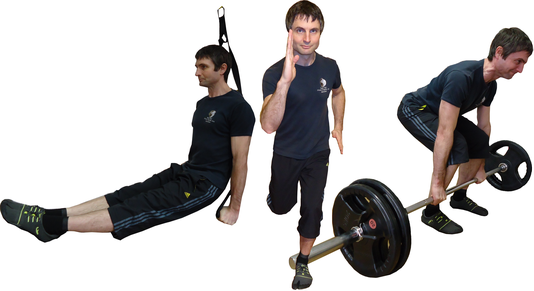
Are you tired of being below average?
Do you think you are above?
Introduction
The Personal Fitness Level or PFL program is a fitness assessing and training system, it is based on UK and US statistical data, and covers the entire spectrum of the human body’s physical ability.
Unlike many training programs, it does not focus on one type of energy system like strength or cardiovascular, as this can be counter productive in creating a balanced healthy body, and it does not stop at general health either. The PFL Program targets all the energy systems that the human body utilises in energy exertion including; stability, cardiopulmonary, strength, power and speed, agility and quickness, it also looks to go beyond ‘the norm’ in order to see just what a human body is capable of achieving!
Intro Video
How does it work?
The program consists of 31 Disciplines (or exercises), and some variations. The Disciplines are divided into 4 main Categories, and these Disciplines and Categories are then used to create the 8 Levels of the PFL program.
Quick Start
To get started, simply click on the 'PFL Level' links (starting with 'Level 1'), at the bottom of the screen or from the dropdown menu. You can then download the 'Record Sheet', which lists all of the 'Disciplines' (test exercises), and watch the videos or follow the descriptions where applicable. There is also a 'Discipline Description Note Abbreviation' table at the bottom of each page, which you may want to download also.
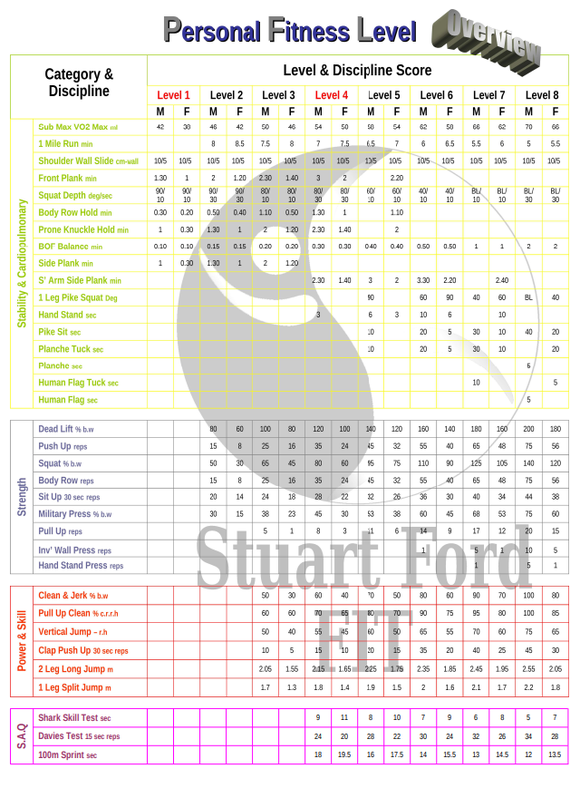
PFL Categories
Stability & Cardiopulmonary
Stabilisation is the first step in creating a safe and integral structure of the body’s joints and frame, with enough flexibility and mobility to perform everyday movements and carry load. In the same way we can stabilise the cardiopulmonary system which comprises of the heart and lungs, in preparation for more vigorous exercise.
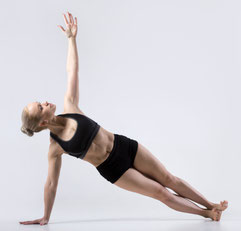

Strength
After stabilising the body, we can start increasing load and repetition speed to enable us to lift and manipulate more weight, and cope with higher levels of resistance.
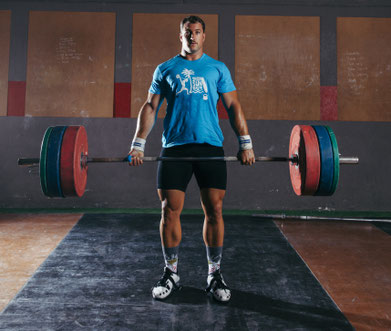
Power & Skill
When your strength has reached a practical standard, you can begin the fun stuff! Power and skill is the stage many of us ‘jump’ straight into before tackling the two previous categories. Running for example is a power exercise, (for the calves and shins at least) which commonly leads to injuries when performed too soon and with poor posture.
So power and skill are generally used together to perform any explosive movement which can compensate for a lot of strength as you will see when a Powerlifter picks up more weight than he/she can with just strength.
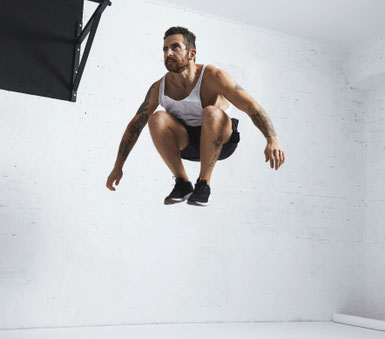
Speed Agility & Quickness
Finally we focus on pure skill and sharpening of the body’s basic senses, coordination and movement patterns to help in learning how to put your new abilities to use.
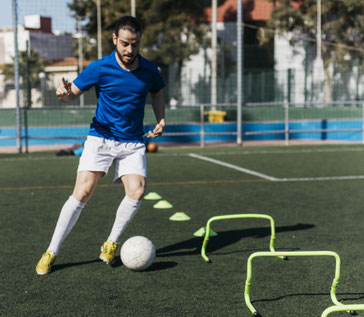
PFL Levels
Level 1 is the entry level into the program and focuses on the 'Stability & Cardiopulmonary' category as detailed above, in order to make sure the body is in a healthy enough condition to commence a more varied training program.
On completion of this level you will already be in the top 5% of the population.
Level 2 introduces 'Strength' and brings us into the top 3.75%
Level 3 introduces 'Power & Skill' and lies in the top 2.5%
Level 4 is the next milestone and introduces the last of the basic categories 'SAQ'. At this level you will be considered soundly fit for a healthy male or female respectively, it will also mean you are at a level of health to safely take part in advanced physical activities like: athletics, gymnastics, powerlifting, rugby, football, martial arts and parkour. But this does not mean that you are in remarkable condition, only 'sound'. If this seems extreme to you then please remember that the average standard of health in today’s Western society is at an all-time low, mostly because we are not nearly as active as we are designed to be!
This is highlighted by the fact that you will now be in the top 1.25% of the population.
Levels 5 – 7 will take you steadily towards your peak physical condition, by building on the four categories, with advanced Stability exercises, increased load in strength, distance, height and load in Power & Skill, and Speed and repetitions in SAQ. These levels will lead up to the top 0.125%
Level 8 will catapult you into the world of the Elite Athlete, but unlike most athletes if you are able to maintain standards in all categories then you will have the edge over many competitors and set the groundwork for superhuman feats! Level 8 will set you firmly in the top 0.025% of the Western population.
The PFL Disciplines
The 31 PFL Disciplines and their variations, have been selected to highlight the most fundamental physical functions that the human body perform, and to gauge an individual’s capability for each respective movement, posture or cardiopulmonary task. The Disciplines do not however constitute an entire fitness regime, and must be used in conjunction with a well balanced variety of appropriate exercises. The PFL Program, although consisting of some great foundation exercises, is rather more of a reference and testing tool. So it is strongly advised that individuals seek expert supervision and visit the Discipline Library below for guidance, before attempting any of the disciplines listed, you can also follow the contact details in the Contact Page, to book individual or group training sessions, or ask any questions regarding the program.
Training Structure & Flow
After completing Level 1 and the category of ‘Stability & Cardiopulmonary’, you will see from the ‘PFL Overview Chart’, that each category is continued in the next level, only the difficulty increases. So ‘Stability & Cardiopulmonary is combined with ‘Strength’ in level 2, these two categories are combined with ‘Power & Skill’ in level 3, and these three categories are combined with ‘SAQ’ in level 4. You will then continue practicing all of the categories for each remaining level, just to a higher standard. It is important to maintain a balance of all the foundation categories in any exercise regime, to avoid injury and safely work towards peak performance.
Completing Disciplines & Levels
As shown in the videos, each Discipline must be performed with adequate technique, before recording it on your Record Sheet. It is advisable to take notes of your limitations and possible adaptions that you have employed, until you are performing the Disciplines to the required standard.
To pass each level properly, you are required to perform each Discipline within a Category, in the order presented on the Level Record Sheet, with no more than 1 minute in between. You may then have up to 15 minutes in between Categories. You need to start with Cardiopulmonary & Stability, then move through Strength, Power & Skill and finally SAQ as applicable.
Cardiopulmonary Limitations
As stated previously, the PFL Program is designed to seek a balance and ultimately for a participant to achieve their peak physical capability. But in some respects there are definite limitations for a human's energy systems which contradict this ideology. Without going into too much depth in the area of cellular energy production, the human body has two types of muscle fibres; Type I - Slow Twitch and Type II - Fast twitch. Type I are utilised for aerobic activities such as long distance running, and Type II are used for anaerobic exercise, such as weight training and sprinting. Now the body has a mixture of both muscle fibres naturally, and some people will have more of one type, which makes them naturally better at certain activities than others. When we train repeatedly in one area, we can increase the amount of each type, but ultimately we can only reach a 50/50 ratio of Type I and Type II muscle fibres making up our total body's structure. This in turn puts tremendous limitations on the end result in either area of training, which means that one side has to give. The PFL System therefore concentrates more on Type II muscle fibres, for two main reasons; one is that it is very difficult to maintain high standards of aerobic capacity, and this will diminish very quickly, not to mention the long periods of time spent pounding the body and heart with repeated movements like running, which can have little impact on an individual's 'body skill'! The other main reason is to do with how we use our body naturally in everyday life. How often does a person raise their heart rate to say 70% and sustain that for an hour or more? It is more likely that we will have either a very mild constant level accompanied by a short duration of harder exertion, or a resistance based task of lifting and carrying. If we also consider that when we are performing hard physical exercise the majority of us will struggle with other determining factors, such as joint pain, flexibility, muscle fatigue and coordination!
Bearing all of this in mind, I have included cardiopulmonary exercise in moderation, at least when compared to the other categories. The PFL Program will create a sound and healthy cardiopulmonary system, that is capable of handling lower level sustained aerobic exercise as well as short bursts of exertion.
Population Score & Athletic Score
Each level of the PFL Program, has two scores associated with it, these are the 'Population Score' (used in the 'PFL Levels' description above) and the 'Athletic Score'.
Population Score
This is an approximate indication of where your health and physical ability lies within the UK and US nations as a percentage, and begins at Level 1 with 5% of the population, and ends with 0.025%. So if for example you have passes Level 4, then you are in the top 1.25%.

Population Score References:
Level 1 = 5%
Level 2 = 3.75%
Level 3 = 2.5%
Level 4 = 1.25%
Level 5 = 0.5%
Level 6 = 0.25%
Level 7 = 0.125%
Level 8 = 0.025%
Athletic Score
The Athletic Score, begins with Level 1 as the start of the 'Athletic Population' as 100%, and then ends with the start of the 'Athletic Elite' at Level 8 as 0.5%. So if for example you pass Level 4 then you are in the top 25% of the Athletic Population.

Athletic Score References:
Level 1 = 100%
Level 2 = 75%
Level 3 = 50%
Level 4 = 25%
Level 5 = 10%
Level 6 = 5%
Level 7 = 2.5%
Level 8 = 0.5%
Discipline Description Note Abbreviations
- ml = millilitres (per kilogram of bodyweight per minute)
- sec = seconds
- min = minutes
- m = meters
- cm-wall = centimetres to wall (maximum distance from back of wrist to wall, recorded at shoulder height and at the top of your overhead reach e.g.,10/5)
- c.f = correct form (posture/technique)
- deg = degrees
- deg/sec = degrees for seconds indicated
- % b.w = percent of bodyweight
- reps = repetitions
- 15 sec reps = repetitions in 15 seconds
- 30 sec reps = repetitions in 30 seconds
- % r.h = percent of reach height (standing with feet flat, mark as high as your fingertips can reach)
- - r.h = minus reach height (standing with feet flat, mark as high as your fingertips can reach)
- % c.r.r.h = percent of calf-raise-reach-height (standing on the balls of your feet mark as high as your fingertips can reach)
- BL = baseline (as low as it is possible to go)



